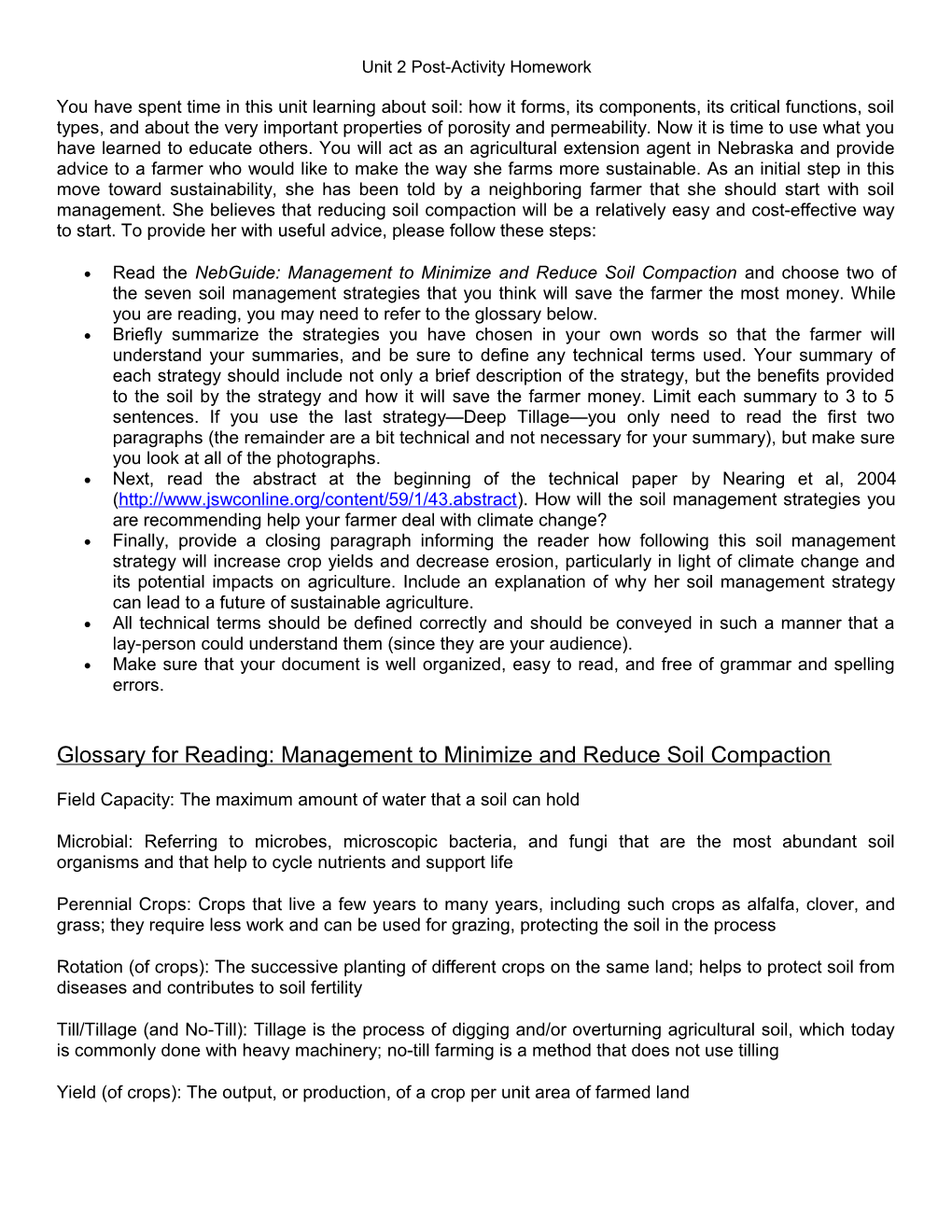Unit 2 Post-Activity Homework
You have spent time in this unit learning about soil: how it forms, its components, its critical functions, soil types, and about the very important properties of porosity and permeability. Now it is time to use what you have learned to educate others. You will act as an agricultural extension agent in Nebraska and provide advice to a farmer who would like to make the way she farms more sustainable. As an initial step in this move toward sustainability, she has been told by a neighboring farmer that she should start with soil management. She believes that reducing soil compaction will be a relatively easy and cost-effective way to start. To provide her with useful advice, please follow these steps:
- Read the NebGuide: Management to Minimize and Reduce Soil Compaction and choose two of the seven soil management strategies that you think will save the farmer the most money. While you are reading, you may need to refer to the glossary below.
- Briefly summarize the strategies you have chosen in your own words so that the farmer will understand your summaries, and be sure to define any technical terms used. Your summary of each strategy should include not only a brief description of the strategy, but the benefits provided to the soil by the strategy and how it will save the farmer money. Limit each summary to 3 to 5 sentences. If you use the last strategy—Deep Tillage—you only need to read the first two paragraphs (the remainder are a bit technical and not necessary for your summary), but make sure you look at all of the photographs.
- Next, read the abstract at the beginning of the technical paper by Nearing et al,2004 ( will the soil management strategies you are recommending help your farmer deal with climate change?
- Finally, provide a closing paragraph informing the reader how following this soil management strategy will increase crop yields and decrease erosion, particularly in light of climate change and its potential impacts on agriculture. Include an explanation of why her soil management strategy can lead to a future of sustainable agriculture.
- All technical terms should be defined correctly and should be conveyed in such a manner that a lay-person could understand them (since they are your audience).
- Make sure that your document is well organized, easy to read, and free of grammar and spelling errors.
Glossary for Reading: Management to Minimize and Reduce Soil Compaction
Field Capacity: The maximum amount of water that a soil can hold
Microbial: Referring to microbes, microscopic bacteria, and fungi that are the most abundant soil organisms and that help to cycle nutrients and support life
Perennial Crops: Crops that live a few years to many years, including such crops as alfalfa, clover, and grass; they require less work and can be used for grazing, protecting the soil in the process
Rotation (of crops): The successive planting of different crops on the same land; helps to protect soil from diseases and contributes to soil fertility
Till/Tillage (and No-Till): Tillage is the process of digging and/or overturning agricultural soil, which today is commonly done with heavy machinery; no-till farming is a method that does not use tilling
Yield (of crops): The output, or production, of a crop per unit area of farmed land
